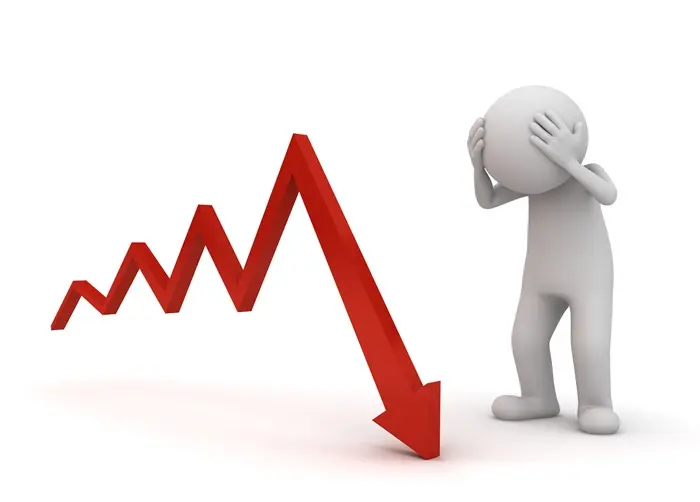In the financial industry, understanding various metrics and concepts is crucial for making informed decisions. One such key metric is the turnover rate, which provides valuable insights into the trading activity and liquidity of a stock. This article will delve deeply into the concept of turnover in stocks, exploring its definition, importance, factors affecting it, and how it is calculated. By the end of this article, you will have a comprehensive understanding of turnover rates in stocks and their significance in the world of investing.
Definition of Turnover Rate in Stocks
The turnover rate in stocks refers to the frequency at which the shares of a particular stock are bought and sold within a specific time period. It is a measure of the trading activity and liquidity of a stock. The turnover rate is expressed as a percentage and represents the proportion of the total shares outstanding that have been traded during the given time period.
A high turnover rate suggests a substantial level of buying and selling activity, indicating a more active and liquid market for the stock. Conversely, a low turnover rate implies less trading activity and may indicate a lack of investor interest or a more stable and long-term investor base.
Importance of Turnover Rate in Stocks
For investors, the turnover rate serves as a measure of how actively a particular stock is being traded. It is an important aspect of analyzing the investment potential and risk associated with a stock. By understanding the turnover rate, investors can gain a clearer picture of the market dynamics and the level of investor interest in a particular stock.
1. Market Liquidity
Liquidity is a critical factor in stock investing. It refers to the ease of buying and selling assets without significantly affecting their price. A high turnover rate indicates that the stock is highly liquid, meaning it can be easily bought and sold without causing significant price fluctuations. This can be beneficial for investors who need to sell their shares quickly, such as those facing margin calls or those who want to capitalize on short-term gains.
2. Investor Sentiment
The turnover rate can also provide insights into investor sentiment. A high turnover rate may indicate that investors are actively trading the stock, possibly due to optimism or pessimism about its future prospects. Conversely, a low turnover rate may suggest that investors are taking a more cautious approach, possibly due to uncertainty or a lack of confidence in the stock’s future performance.
3. Volatility
Stocks with high turnover rates tend to be more volatile than those with low turnover rates. This is because high turnover rates often indicate a higher level of speculation and short-term trading, which can lead to more significant price fluctuations. Investors who prefer stability and predictability may prefer stocks with lower turnover rates.
4. Investment Strategy
The turnover rate can also influence an investor’s strategy. For example, investors who focus on short-term gains may prefer stocks with high turnover rates, as these stocks tend to have more opportunities for price movements. On the other hand, investors who adopt a long-term approach may prefer stocks with lower turnover rates, as these stocks tend to be less volatile and may offer more stable returns over time.
Factors Affecting Turnover Rate in Stocks
Several factors can influence the turnover rate of a stock, including:
1. Company Fundamentals
The financial health and performance of a company can affect its stock turnover rate. A company with strong fundamentals, such as high earnings growth, low debt levels, and a competitive advantage, may attract more investors and thus have a higher turnover rate. Conversely, a company with weak fundamentals may have a lower turnover rate due to a lack of investor interest.
2. Market Conditions
Market conditions can also impact the turnover rate of a stock. For example, during bull markets, when stock prices are generally rising, investors may be more willing to buy and sell stocks, leading to higher turnover rates. Conversely, during bear markets, when stock prices are generally falling, investors may be more cautious and less likely to trade, resulting in lower turnover rates.
3. Industry Characteristics
The industry in which a company operates can also affect its stock turnover rate. Some industries, such as technology and biotechnology, tend to be more volatile and speculative, leading to higher turnover rates. On the other hand, industries such as utilities and consumer staples tend to be more stable and predictable, resulting in lower turnover rates.
4. Investor Behavior
Investor behavior can also influence the turnover rate of a stock. For example, retail investors, who may be more prone to speculation and short-term trading, may contribute to higher turnover rates. Institutional investors, who tend to adopt a more disciplined and long-term approach, may contribute to lower turnover rates.
5. Regulatory Environment
The regulatory environment can also impact the turnover rate of a stock. For example, changes in trading rules or regulations may affect the willingness of investors to trade, leading to changes in turnover rates. Additionally, market manipulation or fraud can also affect turnover rates, as investors may become more cautious and less likely to trade in response to such events.
Calculation of Turnover Rate in Stocks
The turnover rate of a stock can be calculated using the following formula:
Turnover Rate = (Number of Shares Traded / Total Shares Outstanding) * 100%
To calculate the turnover rate, you need to know the number of shares traded over a specific time period and the total number of shares outstanding for the same period. The number of shares traded can be obtained from stock exchange data or financial reports. The total number of shares outstanding can be found in a company’s balance sheet or annual report.
For example, suppose a company has 10 million shares outstanding and 2 million shares are traded over a one-month period. The turnover rate for that month would be calculated as follows:
Turnover Rate = (2 million shares / 10 million shares) * 100% = 20%
This means that 20% of the company’s shares were traded during that month.
Interpretation of Turnover Rate in Stocks
Interpreting the turnover rate of a stock involves considering both the absolute value and the context in which it is presented. Here are some key points to consider:
1. Absolute Value
The absolute value of the turnover rate provides a snapshot of the trading activity for a specific time period. A high turnover rate indicates that the stock has been actively traded, while a low turnover rate suggests less trading activity.
2. Comparison to Peers
It is often useful to compare a stock’s turnover rate to those of its peers in the same industry. This can help investors understand whether the trading activity is typical for the industry or whether it is unusually high or low.
3. Historical Context
Considering the turnover rate in historical context can provide additional insights. For example, a sudden increase in turnover rate may indicate a change in investor sentiment or a significant event that is affecting the stock. Conversely, a consistent turnover rate over time may suggest that the stock’s trading activity is relatively stable.
4. Correlation with Performance
Some investors may also look for a correlation between turnover rate and stock performance. However, it is important to note that there is no definitive relationship between turnover rate and stock returns. While some studies have found that stocks with high turnover rates tend to be more volatile, others have found no significant correlation between turnover rate and long-term returns.
Conclusion
In conclusion, the turnover rate is a key metric that provides insights into the trading activity and liquidity of a stock. By understanding the turnover rate, investors can gain a clearer picture of the market dynamics and the level of investor interest in a particular stock. While there is no definitive relationship between turnover rate and stock returns, considering the turnover rate in context can help investors make more informed decisions.
Whether you are a seasoned investor or a newcomer to the financial markets, understanding the turnover rate is an essential part of developing a comprehensive investment strategy. By keeping track of a stock’s turnover rate and considering it in conjunction with other metrics and factors, you can make more informed decisions and potentially improve your investment outcomes.
Related topics:































